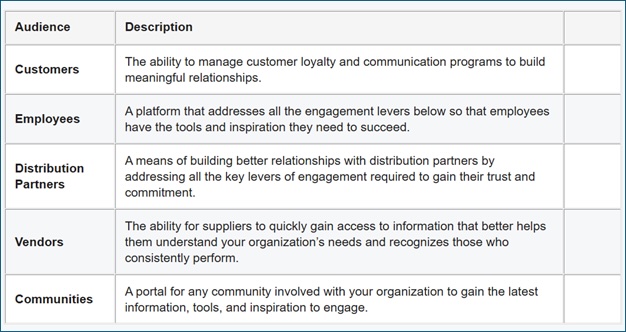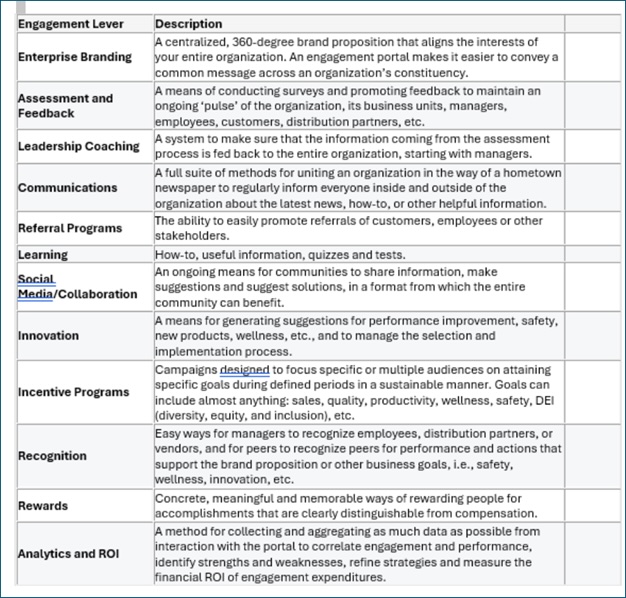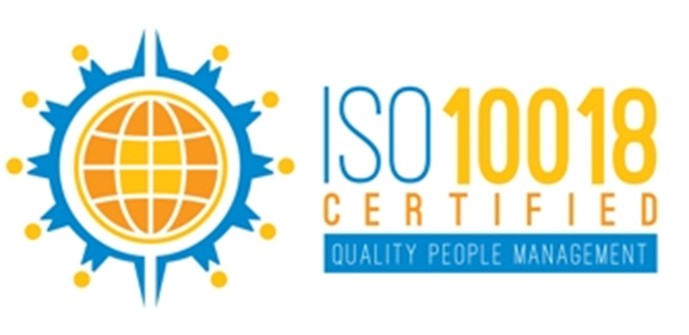How Enterprise Engagement Impact Technology Can Power Value Creation
For decades, US organizations alone have spent hundreds of billions of dollars on incentives, rewards, recognition, and loyalty programs and yet Gallup surveys and American Customer Satisfaction Index continue to hover near historic lows. In the meantime, since the dot-com era, venture capital and private equity firms have invested billions in recognition and rewards technology, not one of which has yet reached unicorn status or gone public. Is there a missing link?
By
Bruce Bolger
Click here to subscribe to the ESM weekly e-newsletter.
The Technology Already Exists
The Engagement Paradox
A Proven Model Hiding in Plain Sight
The Market Blind Spot
Why the Need Is Growing
A Call for a New Category
From Soft Skills to Hard Results
Finding a brand name reward, gift card, or travel experience is hardly a source of supreme executive pain. The technology and retail worlds abound with gift, rewards, and recognition technologies for different types of stakeholders. What it lacks is an integrated approach
.jpg)
long proven in total quality management to achieve measurable results.
Enterprise Engagement Impact Technology (EEIT) turns each stakeholder engagement campaign into an ongoing story focused on the relevant stakeholders, providing everything they need to achieve success. This is illustrated by the mock Advanced Agra employee engagement campaign pictured on the left of the adjacent image. Traditional incentive and recognition platforms, such as the one illustrated on the right by
Achievers, an award winning recognition firm, are eye-catching but focus on the employees, recognition, and awards not on the purpose, goals, and objectives and the tools needed to achieve them.
EEIT is strategic, bringing together all the tools to enhance and measure engagement. Recognition, incentive, and gifting platforms are tactical, addressing more limiated aspects of engagement with correspondingly fewer analytics capabilities.
Click here for an overview of a mock case study of how a farm equipment manufacturer could use a strategic enterprise engagement program to enhance productivity and quality with a highly measurable way using an enterprise
.png)
engagement technology and statistical process controls. Similarly,
click here for a case study of the same company's campaign for its distribution partners, farm equipment wholesalers. The technology can support the same features customized for each campaign, whether employees, channel partners, customers, or any stakeholders.
In the wake of growing international sustainability and reporting mandates affecting multi-nationals, companies are pouring unprecedented resources into data, technology, and transparency, while demand for recognition technology appears to have stalled. Yet, amid the surge of ESG (environmental, social, governance) platforms, AI-driven analytics, and sustainability dashboards, a crucial gap remains: the technology to align, engage, and measure the performance impact of all stakeholders — employees, customers, channel partners, and communities — around a shared purpose.
As companies mature in their sustainability and stakeholder reporting, the next differentiator will be their ability to show how engagement drives measurable value creation. As multiple
Enterprise Engagement Alliance YouTube shows and feature articles have demonstrated, the measurement of traditional incentive, recognition, loyalty, motivational event and other related tactics remains early stage at best.
Those who adopt and define the
Enterprise Engagement Impact Technology (EEIT) category now could lead that transition — turning purpose and people into quantifiable strategic assets. The tools are here. The need is clear. What isn’t working: the understanding by many business professionals and the IRR and related technology industry that value is created by integrated process design, implementation, and impact, not rewards and recognition alone.
What’s missing is recognition that
enterprise engagement impact isn’t an HR concept — it’s the future of integrated business management focused on concrete value creation. A well-designed engagement campaign not only produces tangible benefits but enhances stakeholder experiences by making them more fun and meaningful.
The Technology Already Exists
This technology exists, but few companies or vendors are designing, packaging or marketing it for what it truly is:
Enterprise Engagement Impact Technology — a systems-based approach that turns the “soft” side of business into a measurable, value-producing discipline. EEIT enables organizations to focus all stakeholders or specific teams on how they can deliver on the purpose, goals, and objectives. EEIT aligns all the communications, learning, feedback, innovation and collaboration, rewards, recognition and other tools on a single platform (often siloed on company intranets at big organizations) that can be used for any stakeholder group and purpose.
EEIT and related processes can support organization-wide campaigns to promote the enterprise-wide purpose, goals, objectives, and values, or division or team-focused efforts to address productivity, quality, innovation, wellness and safety with employees, achievement of goals in the sales department; or enhanced customer satisfaction and loyalty.
Technology and rewards are not the challenge. It’s the understanding by management of what it means to integrate and align all the tactics of engagement on a single platform. For instance, large companies segregate recognition from surveys, learning and communications, when in fact EEIT integrates them so that all encourage and support what organizations need their stakeholders to accomplish.
EEIT is not an intranet for the organization. Rather, it’s a portal to a program specifically designed to inform, equip and inspire stakeholders to achieve a specific purpose, goals, and objectives, whether as customers, sales and non-sales employees, distribution and supply chain partners or anyone critical to success in a team.
The Engagement Paradox

For decades, organizations have invested billions in incentive, recognition, and loyalty programs designed to motivate employees and customers. Most of these programs deliver isolated wins — a spike in sales, a temporary morale boost — but rarely demonstrate sustained financial impact due to a fundamental failure to consistently measure the results. The reason is structural.
Traditional engagement programs focus on activities and rewards, not on aligning every stakeholder with the organization’s or team's purpose, goals, and measurable outcomes, or ensuring they know what to do or how to do it. The result is fragmented engagement: HR runs recognition programs, marketing handles customer loyalty, sales manages incentives, and sustainability teams track ESG performance — all in silos, without shared metrics or alignment.
In contrast, Enterprise Engagement Impact Technology treats engagement as an integrated system, not a series of disconnected initiatives. It provides the infrastructure to connect purpose, people, and performance through unified goals, analytics, and metrics. It easilly can be launched with a single team for a single purpose, tested, and expanded based on success.
A Proven Model Hiding in Plain Sight
The model for this approach already exists — and it’s one that business has embraced for decades. Total Quality Management (TQM) revolutionized manufacturing by linking every process and stakeholder to measurable performance standards. The same logic applies to people. Enterprise engagement Impact systems apply TQM principles to the human side of business:
-
They align all stakeholders — employees, customers, partners, or members of a specific team around the specific goals and values of the enterprise.
-
They integrate every engagement lever: communications, learning, feedback, incentives, and recognition.
-
They measure causation and correlation, linking engagement initiatives directly to outcomes like retention, productivity, and customer loyalty.
-
They support ISO 10018 People Engagement standards, providing a blueprint for organizations to manage engagement as a process, not a program.
Yet despite its potential, the concept remains buried under more familiar — and narrower — labels such as “employee recognition,” “rewards,” or “HR tech.”
The Market Blind Spot 
As PwC’s
Global Sustainability Reporting Survey 2025 suggests, more than two-thirds of companies now see real business value in linking non-financial data to decision-making. They’re investing in AI, analytics, and ESG reporting systems to prove how sustainability and social performance create shareholder value.
But few are applying that same rigor to the people and relationship side of value creation — arguably the foundation of every other metric.
There’s no shortage of technology: recognition platforms, learning management systems, customer loyalty apps, and ESG dashboards. What’s missing is the connective tissue — a technology architecture that unifies these systems into a measurable engagement strategy tied to purpose and profit.
That’s what
Enterprise Engagement Impact
technology provides — yet most providers are still selling it as recognition, rewards, incentive, loyalty, or engagement software rather than as a strategic platform for value creation.
Why the Need Is Growing
Several forces are converging to make this gap impossible to ignore:
-
Stakeholder management. Investors, employees, and customers increasingly demand evidence that companies act on purpose-driven strategies that engage all stakeholders.
-
Technology maturity. AI, data integration, and cloud platforms now make it imperative to connect and measure engagement activities across the enterprise.
-
Talent and trust. Organizations are realizing that engagement isn’t about perks — it’s about alignment, meaning, and measurable contribution to shared goals.
-
Regulatory pressure on multi-national companies and US supplers. Frameworks like the Corporate Sustainability and Reporting Directive (CSRD) and ISSB (International Sustainability Standards Board) are pushing companies to measure not just environmental impact but also the “S” — social value and workforce engagement — with the same precision as financial reporting.
In this environment, the absence of Enterprise Engagement Impact systems isn’t just an oversight — it could become a strategic vulnerability.
A for a New Category 
The irony is that this technology already exists. Platforms already enable organizations to:
-
Align every stakeholder with common purpose and metrics.
-
Integrate communications, training, surveys, and rewards.
-
Capture cause-and-effect data linking engagement to financial and sustainability outcomes.
-
Report results in formats that support global standards like ISO 10018 and CSRD.
But because the market hasn’t yet defined Enterprise Engagement Impact as a category, most organizations don’t realize such technology can address their most pressing strategic challenges: unifying culture, purpose, and performance across all stakeholder groups.
From Soft Skills to Hard Results
For decades, engagement has been treated as the “soft” side of business — something measured by surveys and sentiment rather than performance.
Enterprise Engagement Impact %echnology changes that narrative. It applies the same data discipline, integration, and process management long used in operations and finance to the way organizations manage human and relationship capital.
The message is simple: Engagement isn’t a perk — it’s a process. And with the right systems in place, it’s one that can be measured, optimized, and scaled for continuous improvement.
Enterprise Engagement Alliance Services
 Celebrating our 15th year, the Enterprise Engagement Alliance helps organizations enhance performance through:
1. Information and marketing opportunities on stakeholder management and total rewards:
2. Learning: Purpose Leadership and Stakeholder
Celebrating our 15th year, the Enterprise Engagement Alliance helps organizations enhance performance through:
1. Information and marketing opportunities on stakeholder management and total rewards:
2. Learning: Purpose Leadership and Stakeholder Management Academy to enhance future equity value for your organization.
3. Books on implementation: Enterprise Engagement for CEOs and Enterprise Engagement: The Roadmap.
4. Advisory services and research: Strategic guidance, learning and certification on stakeholder management, measurement, metrics, and corporate sustainability reporting.
5. Permission-based targeted business development to identify and build relationships with the people most likely to buy.
Contact: Bruce Bolger at TheICEE.org; 914-591-7600, ext. 230.
Management Academy to enhance future equity value for your organization.
3. Books on implementation: Enterprise Engagement for CEOs and Enterprise Engagement: The Roadmap.
4. Advisory services and research: Strategic guidance, learning and certification on stakeholder management, measurement, metrics, and corporate sustainability reporting.
5. Permission-based targeted business development to identify and build relationships with the people most likely to buy.
Contact: Bruce Bolger at TheICEE.org; 914-591-7600, ext. 230.
.jpg) long proven in total quality management to achieve measurable results.
long proven in total quality management to achieve measurable results. .png) engagement technology and statistical process controls. Similarly, click here for a case study of the same company's campaign for its distribution partners, farm equipment wholesalers. The technology can support the same features customized for each campaign, whether employees, channel partners, customers, or any stakeholders.
engagement technology and statistical process controls. Similarly, click here for a case study of the same company's campaign for its distribution partners, farm equipment wholesalers. The technology can support the same features customized for each campaign, whether employees, channel partners, customers, or any stakeholders. 


 Celebrating our 15th year, the Enterprise Engagement Alliance helps organizations enhance performance through:
Celebrating our 15th year, the Enterprise Engagement Alliance helps organizations enhance performance through: Management Academy to enhance future equity value for your organization.
Management Academy to enhance future equity value for your organization. ESM News Alert for the latest news. Subscribe here.
ESM News Alert for the latest news. Subscribe here.
